Apple Vision Pro Ushers Brands into Era of Spatial Computing
Apple unveiled the Apple Vision Pro in early February, marking the onset of the “era of spatial computing”. To explore the implications this holds for brands and retailers, our team at McMillanDoolittle demoed the device at the Apple Store located on Chicago’s Magnificent Mile. For a quick video overview of our experience, we invite you to view our Instagram Reel.
Is the Vision Pro merely another headset?
While the appearance of the Vision Pro may draw comparisons to competing devices such as the Meta Quest or PlayStation VR, Apple’s messaging around the Vision Pro strategically avoids terms such as “headset,” “virtual reality,” or “augmented reality”. Instead, the focus lies squarely on the concept of “spatial computing” – the blending together of the physical and virtual world.
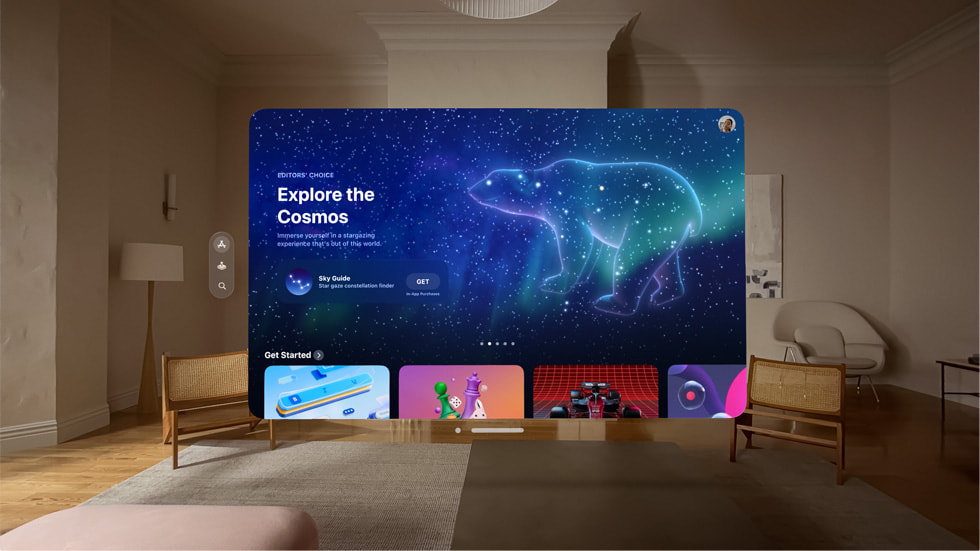
Photo Credit: Apple.com
The Vision Pro’s first-of-its-kind operating system, named visionOS, powers this interaction between realms. After a simple calibration process, users gain precise control over the device using their eye movements, hand gestures, and voice commands, enabling the flexibility to see, move, and resize applications and screens with ease on top of the user’s physical world. “Passthrough” capabilities enable users to still see their physical surroundings through the Vision Pro lens while using the device. The “EyeSight” feature even shows a digitally generated visual of your eyes on the outward display to humanize the technology and indicate to others whether you are using apps or fully immersed in an experience. In addition, the clarity and sharpness of the display is outstanding, lending itself to top-notch entertainment and immersion capabilities.
By consistently reinforcing the concept of “spatial computing” in our in-person demonstration and across its product marketing, it is evident that Apple aims to position the device as a multifaceted tool designed for productivity, entertainment, and meaningful connection.
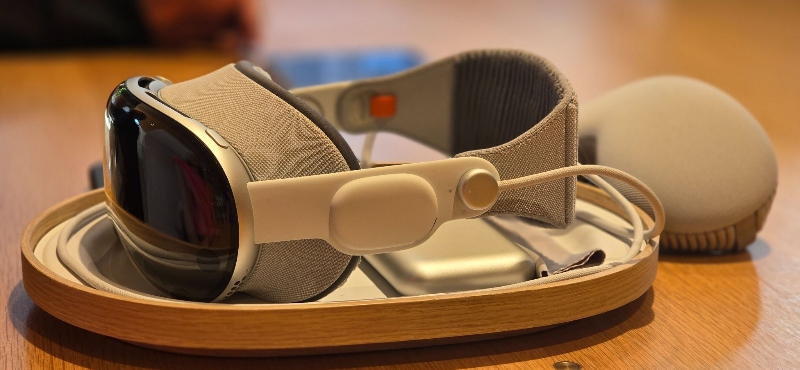
Photo Credit: McMillanDoolittle
What are the implications for brands and retailers?
Given these distinctions in messaging and intended functionality, strategies employed by brands and retailers for existing headsets or the metaverse may not directly translate to the Vision Pro (checkout prior blogs on metaverse players such as McDonald’s, Ralph Lauren, and Nike). A handful of forward-thinking brands and retailers across various industries — including e.l.f. Beauty, Alo Yoga, Lowes, J.Crew, Mytheresa, and Wayfair — were among the first to launch apps for new visionOS software. Drawing from our experience demoing the device and observing retailers venturing into spatial computing, below are five key considerations for creating a Vision Pro experience:
- Design for the Apple Ecosystem: The Vision Pro integrates with existing Apple products, offering users familiar functionality and effectively catering to the millions of Apple users. For instance, the J.Crew Virtual Closet app exemplifies this approach by connecting customers with J.Crew expert stylists through Facetime using the SharePlay feature. Similarly, Lowes Style Studio allows users to create style boards and effortlessly share them with their network via iMessage.
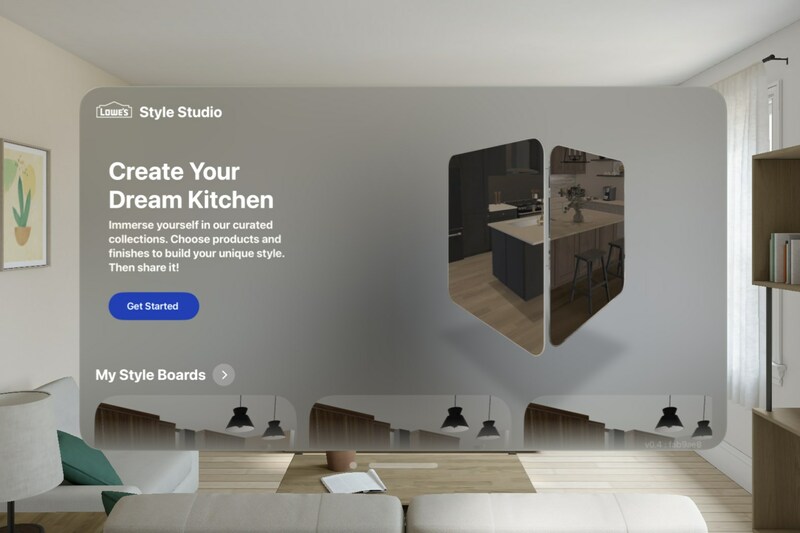
Photo Credit: Lowes.com
- Unique Omnichannel Offerings: While the metaverse primarily focuses on brand exploration, the Vision Pro introduces a novel omnichannel option by enabling seamless purchasing directly from the device. This feature enhances the shopping experience by bridging the gap between virtual exploration and real-world transactions. For instance, e.l.f. Beauty adeptly integrates this concept into its app design, encouraging users to explore its offerings while also incorporating Apple Pay into the customer journey.
- Immersive and Emotional Experiences: The advanced immersive technology, including extreme pixel-density and spatial audio, featured in the Vision Pro offers hyper-realistic experiences, enabling brands to immerse customers in lifelike settings. By showcasing their products in such environments, brands can effectively convey their essence and forge emotional connections with customers. For instance, luxury e-commerce platform Mytheresa elevates the shopping experience by positioning their high-end product listings within locations like Paris and Capri, crafting a luxurious and sensory-rich journey for shoppers. Furthermore, initiatives like “alo Sanctuary” go beyond mere product presentation, encouraging customers to partake in mindful meditation amidst curated outdoor environments while exploring 3D images of current product collections. These examples highlight the potential of the Vision Pro to transform shopping into an immersive and emotionally resonant experience.
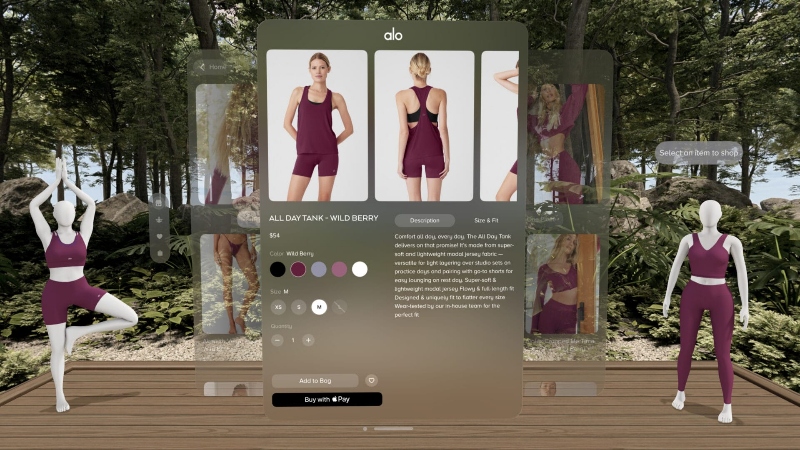
Photo Credit: Obsessar.com
- Enhanced Real-Life Experiences: The fusion of physical and digital realms facilitates the exploration of products within personal environments, representing a significant advancement in augmented reality technology. This next-level experience enables users to view items in their actual scale and visualize them within a space. For instance, Wayfair has introduced the Decorify app that leverages the built-in 3D camera of the Vision Pro. Users can capture a photo of their space, and the app generates simulated room transformations, allowing for the placement of 3D furniture and home décor directly within the environment. These items are seamlessly linked to the catalog, enabling users to explore product listings and conveniently add them to their cart for purchase.
- Early Adopter Opportunities: The initial version of the Apple Vision Pro presents notable limitations such as a battery life of only 2 hours, a headset weight deemed as “too heavy” by some users, and a steep starting price point of $3,499, but there are significant opportunities for mass market adoption. Apple representatives have assured ongoing enhancements in subsequent releases to address these concerns. Therefore, these limitations should not deter brands and retailers from embracing this new technology. A parallel can be drawn from Glossier’s early adoption of Instagram, which positioned the brand favorably among Gen Z consumers (Blog from 2019 about Glossier’s success linked here). Applying a similar forward-thinking approach to the Vision Pro presents a unique opportunity for brands to establish themselves as first-movers in this emerging technology landscape.
What now?
While the future of the Vision Pro remains undefined, it’s crucial for brands and retailers to contemplate how this emerging technology and its omnichannel shopping capabilities could integrate meaningfully into existing cross-channel strategies. Contact us to discuss how the Vision Pro could bridge online and offline and fit into your omnichannel approach.
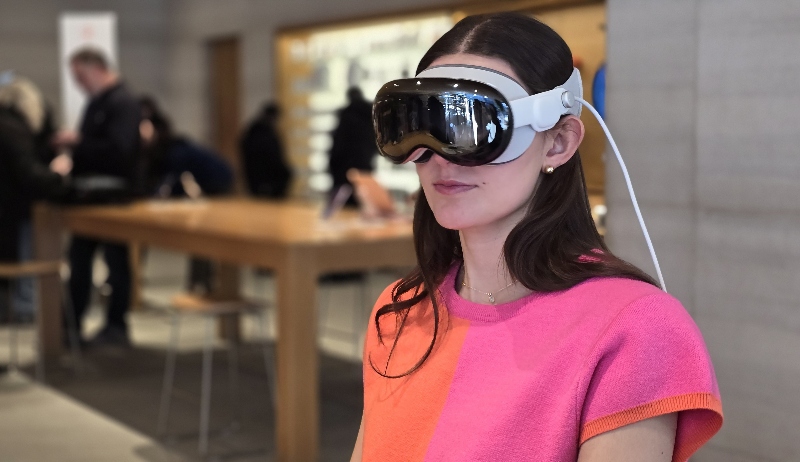
No Comments